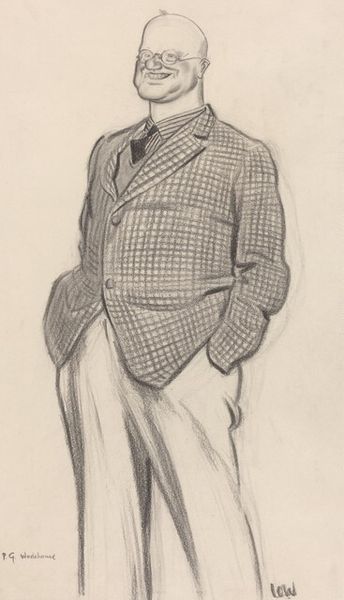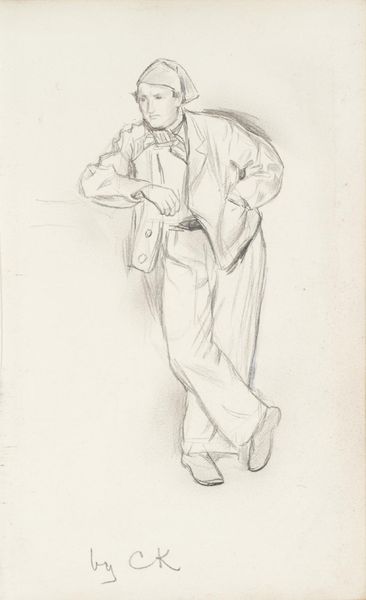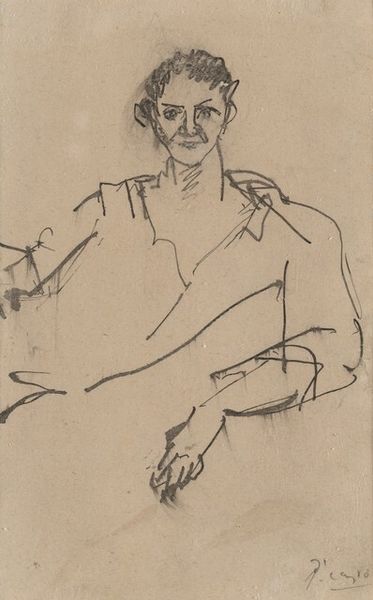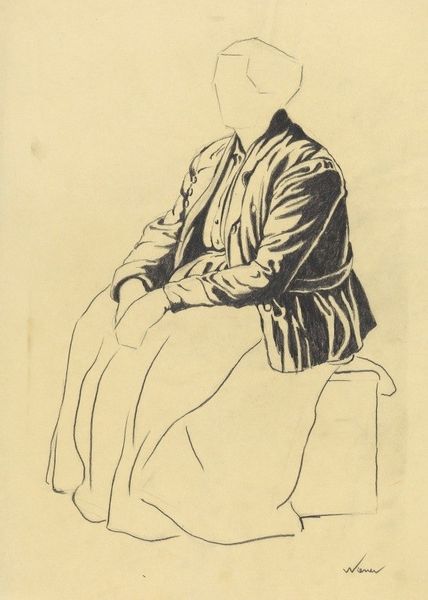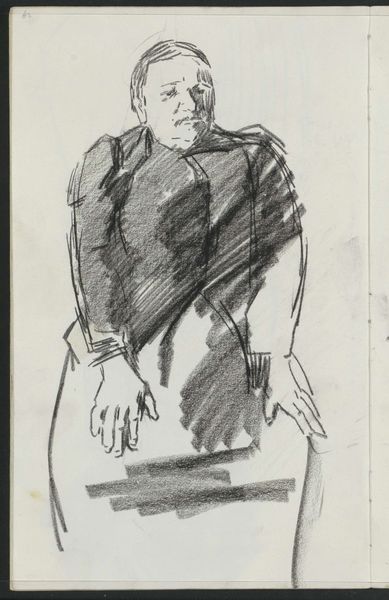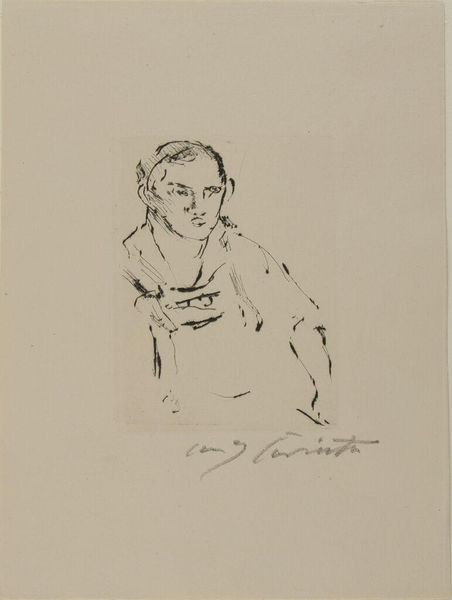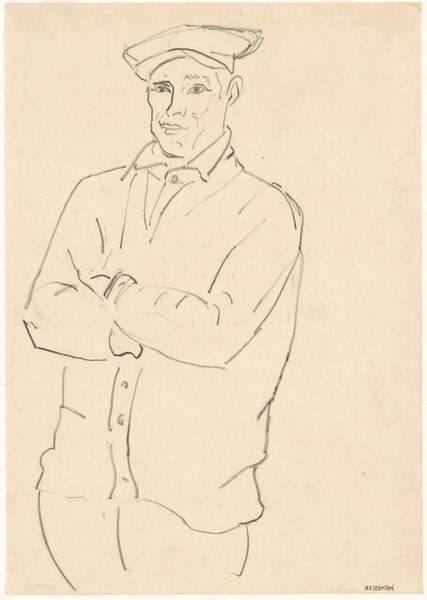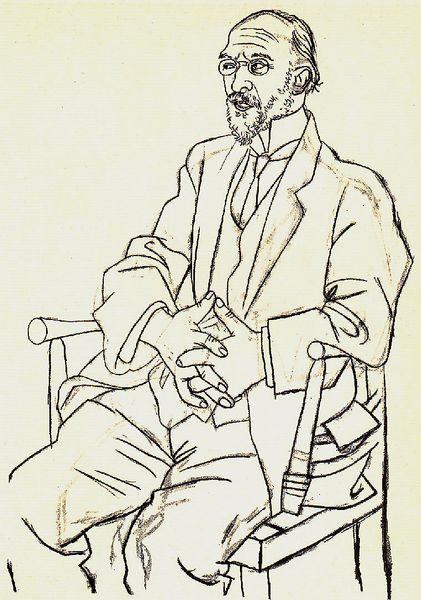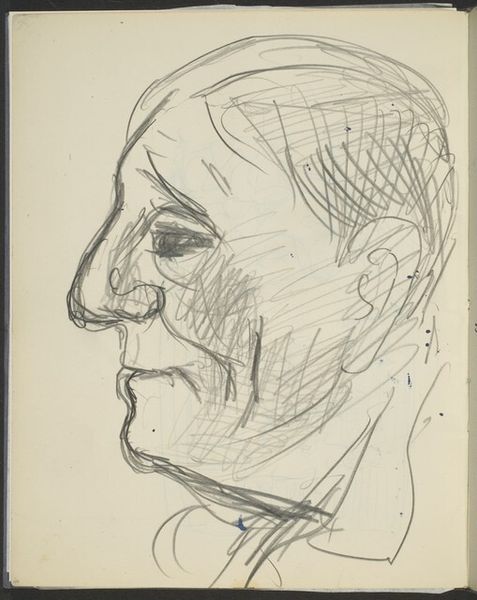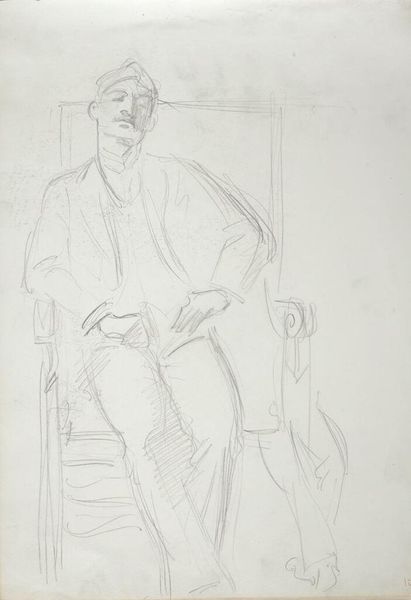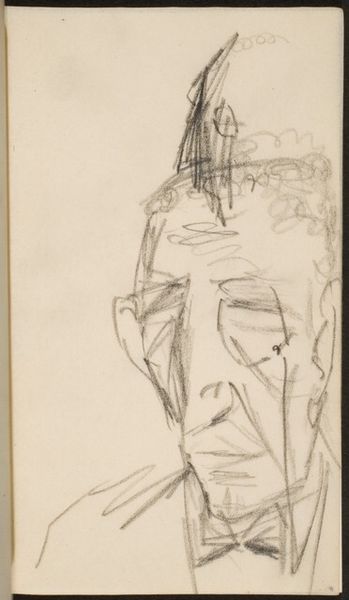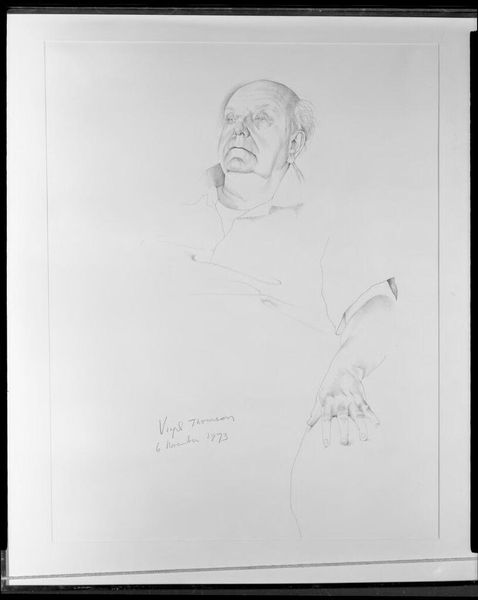
drawing, charcoal
#
portrait
#
drawing
#
cubism
#
charcoal drawing
#
charcoal
#
modernism
Copyright: Pablo Picasso,Fair Use
Curator: Let's turn our attention to this compelling charcoal drawing by Pablo Picasso, created in 1925. It's titled "Portrait of La Scala Master of Ballet." Editor: It has a contemplative air. The cross-hatching technique gives the sitter’s features a subdued, almost shadowy quality. What is it about that era that attracts so many portrait drawings? Curator: Well, the Roaring Twenties saw social upheaval but also a revival of classical arts. I see this work, crafted during Picasso’s sojourn in Monte Carlo, not just as a rendering of an individual, but as an engagement with ballet as a burgeoning entertainment industry that impacted the labor available, materials for building, and the changing consumerist tastes that emerged around leisure and arts events. Editor: Right, and I am intrigued by Picasso's lines; how deftly they capture the folds of the man’s suit and the bone structure beneath his skin, even though the perspective seems slightly skewed. It is so precise, so telling. His method reveals the structure of his subject. Curator: The cubist influences linger, of course. But here, they're tempered, serving to animate the surface, allude to volume while flattening the image. Look at the chair—barely present, yet crucial for understanding space. I think we can interpret its flatness alongside what feels like an exploration of form, mass production, consumer-aimed artwork. Editor: True. The subject’s hands, clasped in front of him, form an anchor for the eye, providing stability in what might otherwise feel like an ethereal composition. It strikes me how self-contained this figure seems. Curator: Perhaps suggesting the rigorous discipline of his profession or that cultural elitism within the high arts world he represented! One can't escape that social dimension to portraits. Editor: Indeed. Thank you for unveiling that layer, a nice reminder to always seek outside the simple surface for art’s meanings. Curator: A crucial approach. And for me, reflecting on labor within art is paramount. Thank you for allowing me to share today.
Comments
No comments
Be the first to comment and join the conversation on the ultimate creative platform.
